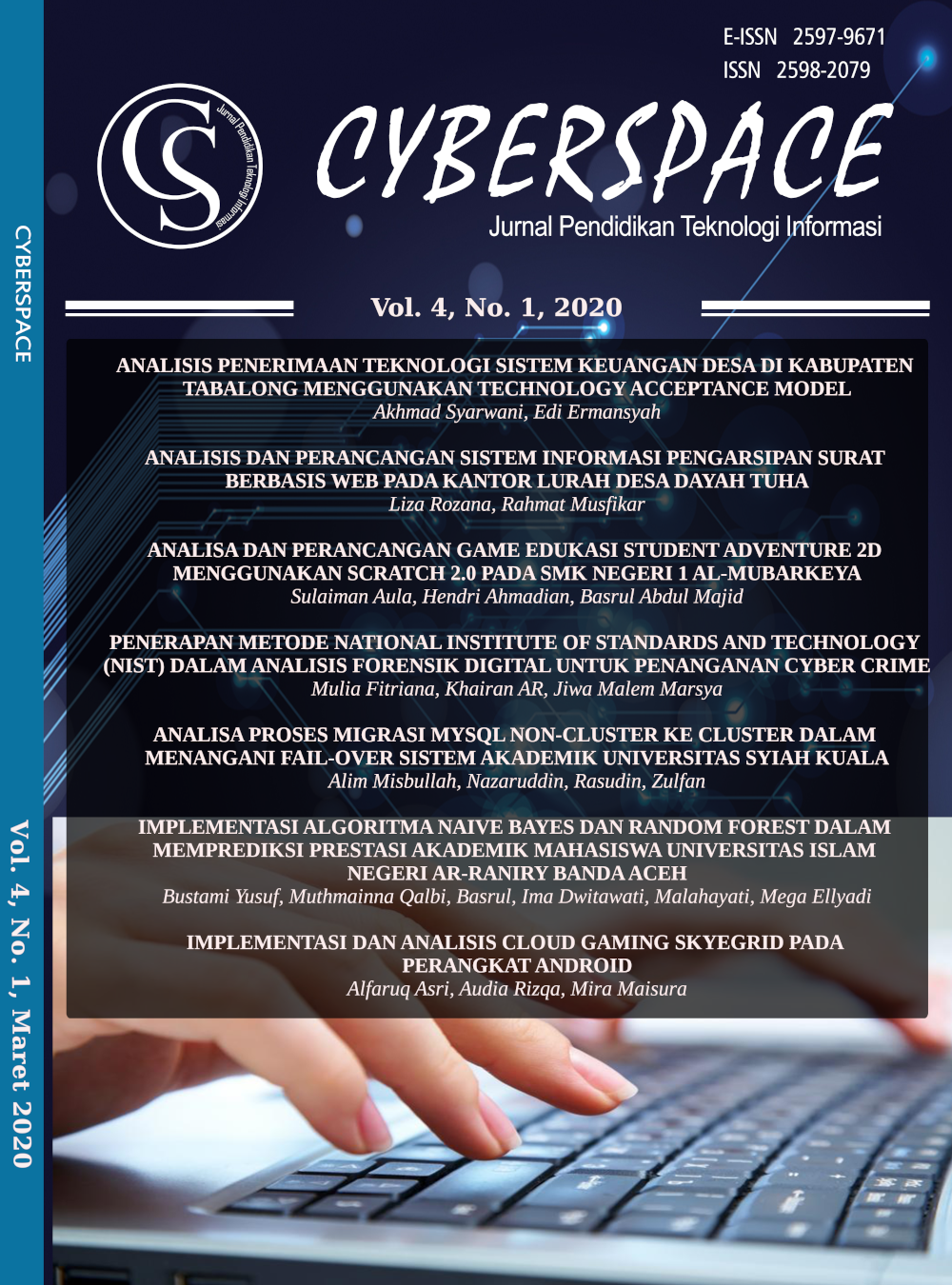PENERAPANA METODE NATIONAL INSTITUTE OF STANDARS AND TECHNOLOGY (NIST) DALAM ANALISIS FORENSIK DIGITAL UNTUK PENANGANAN CYBER CRIME
DOI:
https://doi.org/10.22373/cj.v4i1.7241Keywords:
Digital Forensic, Cyber Crime, WhatsAppAbstract
The development of technology is currently developing very quickly, this is directly proportional to releasing cyber crime. One crime that often occurs is the case of Pornography. This application is done using one of the very popular Instant Messenger (IM) applications, the WhatsApp application. But after the crime is committed next or sending evidence in the form of conversations, video recordings, images and others committed by the suspect using the WhatsApp application. Therefore, this study proposes to find evidence related to digital pornography. This research produced a forensic procedure in conducting an investigation of the WhatsApp application to obtain previously published evidence containing a conversation session, a list of contact numbers, a profile photo of the victim and others. This research was conducted by reading a backup file of the encrypted WhatsApp application database that stores the conversation session that has been released. This research uses the method (National Institute of Standards and Technology (NIST). This digital evidence can be obtained using one of the forensic tools namely WhtasApp Viewer. The results obtained in this study contain WhatsApp contents that have been available which can be found digitally in uncovering the crime of pornography that is happen.References
M. Sobri (2017). Pengantar Teknologi Informasi-Konsep dan Teori. CV. Andi offset.
C. Juditha (2015). Pola Komunikasi dalam Cybercrime (Kasus Love Scams). Jurnal Penelitian dan Pengembangan Komunikasi dan Informatika.
Ramadhan Rizki, 2018: Polri:Indonesia Tertinggi Kedua Kejahatan Siber di Dunia. diakses pada tanggal 19 Agustus 2019. pukul 11:02 WIB. https://www.cnnindonesia.com/nasional/20180717140856-12-314780/polri-indonesia-tertinggi-kedua-kejahatan-siber-di-dunia.
Jurnalis JH, 2014: ‘Cybercrime’ Kejahatan Baru di Aceh. diakses pada tanggal 15 Agustus 2019. pukul 19:27 WIB.
Pajar Pahrudin (2010). Etika Profesi Komputer. Jawa Barat: Goresan Pena Kuningan.
M. faidol Juddi (2019). Communication and Information Beyond Boundaries: Seminar macom III Book Chapter. Bandung: Aksel Media Akselerasi.
Downloads
Published
Issue
Section
License
Authors who publish with Cyberspace Journal agree to the following terms:
- Authors retain copyright and grant the journal right of first publication with the work simultaneously licensed under a Creative Commons Attribution License that allows others to share the work with an acknowledgement of the work's authorship and initial publication in this journal.
- Authors are able to enter into separate, additional contractual arrangements for the non-exclusive distribution of the journal's published version of the work (e.g., post it to an institutional repository or publish it in a book), with an acknowledgement of its initial publication in this journal.
- Authors are permitted and encouraged to post their work online (e.g., in institutional repositories or on their website) prior to and during the submission process, as it can lead to productive exchanges, as well as earlier and greater citation of published work (See The Effect of Open Access).



















